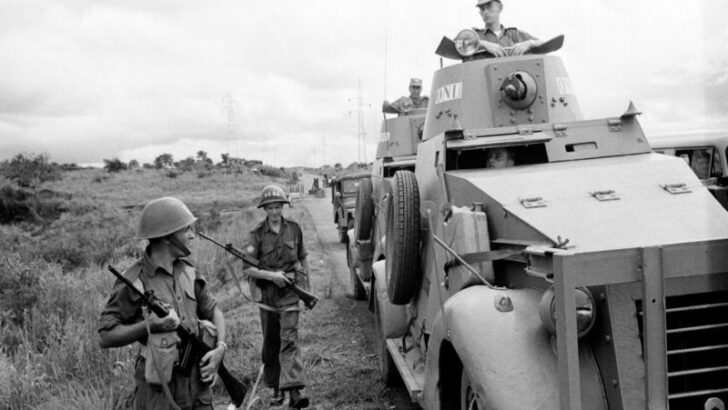The Irish Defence Forces 1922-2022
by Eoin Kinsella (Four Courts Press/€30.00/£27.50)
Defending Ireland over the past 100 years of independence has been the task of the Irish Defence Forces but their main struggle has often been to survive the neglect and parsimony of their political masters.
For a new state that came out of a brief but vicious War of Independence and a demoralising Civil War, there was little money left to defend its borders. For years, the defence budget barely paid the army salaries. There was no navy and Baldonnel aerodrome was called a “jungle airstrip” by the US pilots who airlifted the first Irish UN contingent to the Congo in 1960.
The neglect of the IDF in the early years was exposed in 1940 when “neutral Eire” faced possible invasion by the Germans striking at Britain, or by the British seeking the Treaty Ports handed over in 1939. The Irish response to the “Emergency” was rapid as the army grew from 7,000 to 40,000, and readied its two divisions to face a German airborne invasion on the south coast or a British incursion over the Border or both.
With peace in 1945, the customary neglect returned until the challenges of supplying United Nations peacekeeping forces, and guarding the Border during the Troubles required new thinking and new equipment. The navy later got a new fleet thanks to EU funding to patrol extended fishery limits. And Baldonnel got concrete runways for its new jets and helicopters.
This centenary history with the blessing of the IDF itself, written by a distinguished author from the Royal Irish Academy and packed with interesting photographs, tells the story well.
It also details the foundation of the Military College, the Equitation School and the Army School of Music. Even the long gone dashing Blue Hussars or Mounted Escort are recorded. Morale in the IDF was helped by in house magazines, first An tOglach and later the still surviving An Cosantoir, which was founded by Major General Michael Costello while he was in charge of the Thunderbolt Division facing a possible German invasion along the south coast. Costello in all his time in the army was insistent on the role of education, study and research, even plain reading in the modern army.
The author reveals interesting details from the secret cross-Border cooperation in the Emergency years between British and Irish forces while at the same time they had to be ready to fight each other. Also touched on is the mysterious February 1970 order by Minister for Defence, Jim Gibbons, to the Chief of Staff to prepare for possible incursions across the Border. A few months later Army intelligence found itself embroiled in the Arms Trial.
The history records the various reports and White Papers ordered by governments over the past 30 years back to the Gleeson Commission seeking to set out the future of the IDF. The storyline has not changed much over 50 years. The 2022 commission report commented rather sadly: “Our Defence Forces are largely staffed and equipped for constabulary and overseas taskings, rather than for defence of the State from external aggression.” But then can a so-called neutral State ever know who its future aggressors are?
But there are also enemies within. The author notes that as far back as 2000, there was “Evidence of a culture of disciplinary problems, including sexual harassment of female recruits”. An Independent Monitoring Group was appointed in 2002 to oversee “the implementation of reform” and a female Ombudsman was appointed for the defence forces. The author notes that as a result, “the Department of Defence and the Defence Forces created what was regarded internationally as models of best practice”.
But just this year the most recent report of the Independent Group, alas, as carried in all the news media, tells a different story concerning the treatment of women personnel in the branches of the defence forces. Further investigations as of this week are in the offing. However that may be, it belongs to the future,
For the general reader and the ordinary citizen there is much recorded in this excellent and detailed history that army veterans and the Irish people after a long century can be rightly proud of.


 Irish in the Congo in the early 1960s.
Irish in the Congo in the early 1960s. 